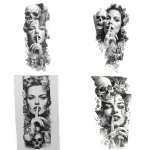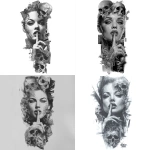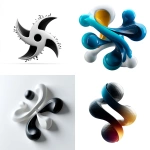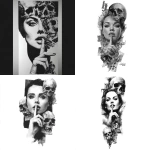Explore the Best AI Image Gallery

AI-Generated Imagery: Reshaping the Design Landscape
The world of design is undergoing a seismic shift with the emergence of artificial intelligence (AI) capable of generating stunningly realistic and creative images. This technology, fueled by powerful algorithms and vast datasets, is not merely a tool for designers but a force reshaping the very fabric of the creative industry.
Applications Across Design Disciplines
The versatility of AI-generated imagery extends across a wide spectrum of design disciplines:
- Graphic Design: AI can generate logos, branding assets, marketing materials, and even entire visual campaigns, saving designers time and resources while offering novel concepts.
- Web Design: Websites can be adorned with unique, AI-crafted visuals, enhancing user experience and aesthetics. From background patterns to interactive elements, AI can breathe life into digital spaces.
- Illustration and Fine Art: AI tools empower artists to explore new creative territories. Artists can use these tools to generate unique concepts, experiment with styles, and even collaborate with AI to create breathtaking artworks.
- Product Design: Imagine AI assisting in generating prototypes for new products, visualizing designs in 3D, and iterating rapidly based on feedback. This accelerates the product development cycle and fosters innovation.
The Ethical Dimension
While AI-generated imagery offers immense potential, it also raises crucial ethical considerations:
- Copyright and Ownership: Questions arise regarding the ownership of AI-generated art. Who holds the copyright – the user who inputs the prompt, the developer of the AI tool, or the AI itself?
- Bias and Representation: AI algorithms are trained on existing datasets, which may contain biases reflecting societal stereotypes. This can result in AI-generated imagery perpetuating harmful representations.
- Authenticity and Deception: The ability to create highly realistic images raises concerns about the potential for misuse, such as generating fake news, deepfakes, or manipulating public perception.
Navigating the Future
The future of AI-generated imagery in design is filled with both promise and challenges. To harness its full potential while mitigating risks, we need:
- Transparent and Accountable AI Systems: Developers should strive for transparency in how AI algorithms work, making them understandable and auditable.
- Diverse and Representative Training Data: Addressing bias in training datasets is crucial to ensure AI-generated imagery reflects the diversity of our world.
- Ethical Guidelines and Regulations: Establishing clear guidelines and regulations for the use of AI in design can help prevent misuse and promote responsible innovation.
AI-generated imagery is poised to revolutionize the design industry, offering unparalleled creative possibilities. By embracing its potential while navigating ethical challenges responsibly, we can shape a future where AI empowers designers and enriches our visual world.
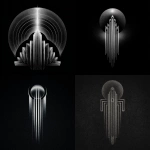


](https://images.ai-img.art/thumbnails/150/4a4f2a16da94ebadad64aeb3b0fb4e64d426431f1d651cc4929142c728fe85b7.webp)
](https://images.ai-img.art/thumbnails/150/37f115f2fa75765b87e6d3e2c9f1b0a80a6a46efa8b864a05278c7fc0a0a62e7.webp)






](https://images.ai-img.art/thumbnails/150/9127f72c6be19d533c26ac476f4d216cd89a6a2d7c351333489a3eff30c3ec5a.webp)

](https://images.ai-img.art/thumbnails/150/24610c8978ce6b4f1ced8639b434482871adb07e38af8b90cd535f2533bf18cc.webp)











](https://images.ai-img.art/thumbnails/150/d29fcfc8037938184a641f7980e1102e24a6e82088bc465886d26ffe5bb006c7.webp)






](https://images.ai-img.art/thumbnails/150/85464d88f1d4314cd042a02a6f41440fc3b4343db529794cbe8e6836fdadf409.webp)



](https://images.ai-img.art/thumbnails/150/b90a5f332cb5d8f02116934e13abd20233e0eeb2368274dbdffaa2e281e4dff5.webp)



](https://images.ai-img.art/thumbnails/150/336026613fd234b8d6908fe18ecc09b2b2ecf7b8dfe294742041c9862dc499c1.webp)

